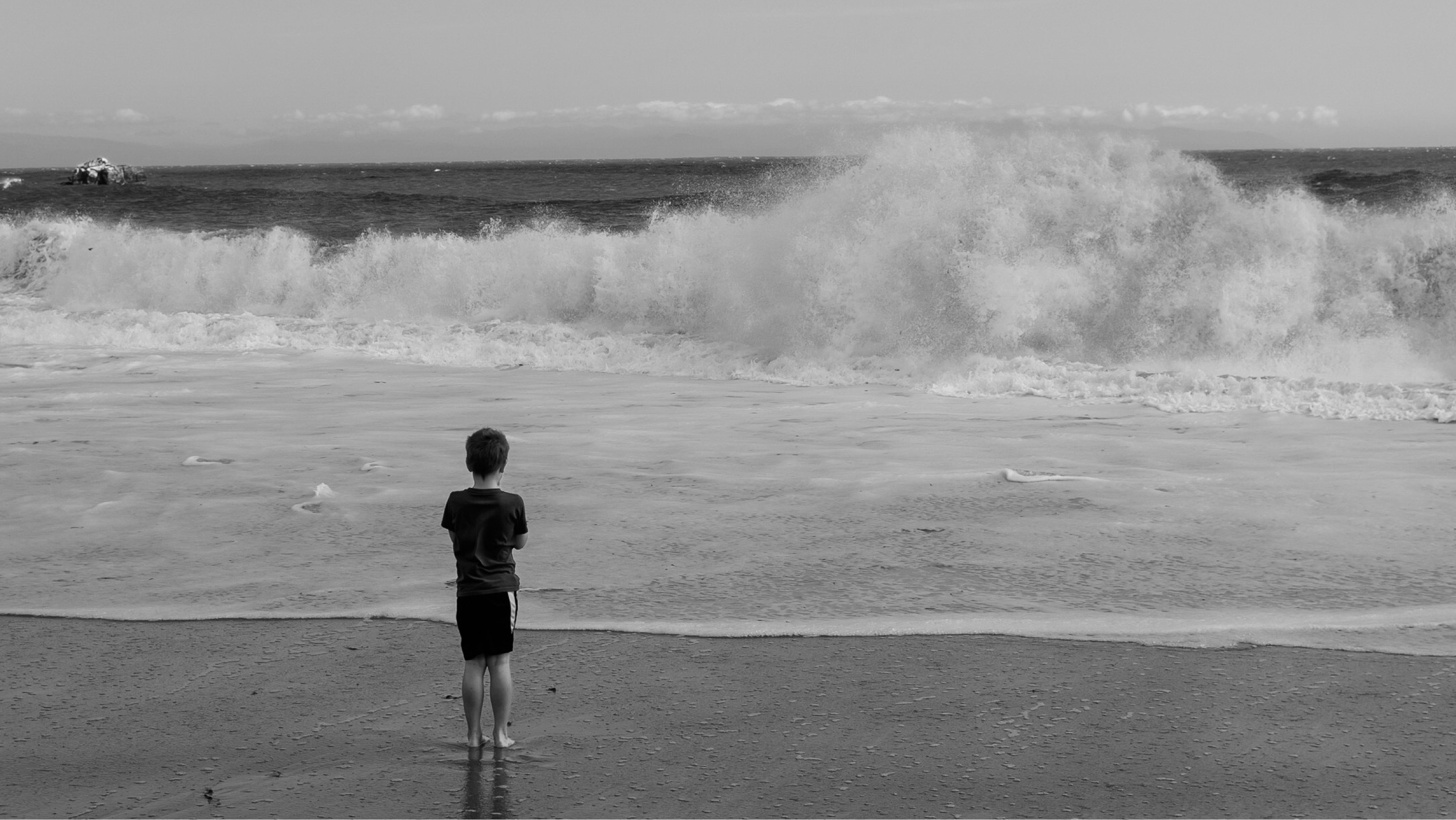

Watching the Crash. Santa Cruz, CA 1/350s at f/8.0, ISO 200
The cross-country move forced me to clean out my basement office this past winter. Hundreds of hard drives, USB sticks, and zip disks1 were stuffed with years of photographs. As I consolidated them into a single Lightroom library, I noticed a disturbing pattern.
Several years ago, I started to examine the edges of the viewfinder after taking a photo while the camera was still pressed to my face. I wanted to improve my composition skill and a photographer with a better eye than mine suggested the technique. It worked too, which lead to second—and sometimes third, fourth, fifth—attempts at the photographs. My expectation was that the subsequent frames would be more successful.
As I reviewed a decade of photographs, it was apparent this expectation was misguided. I would most often select the original, if any at all. I was wasting time. Taking photos was becoming a disruption. According to the boss, I spent too much time fiddling with my camera and less time enjoying the moment with my family.
Ouch.
After the fact, it’s easy to see I should learn to trust my instincts. Take one photo. Put the camera down. Go back to what I was doing. Be more deliberate.
Ken Rockwell has a curious mnemonic for a technique I’ve found very effective. Instead of immediately grabbing the camera, he recommends a slower, more thoughtful approach:
Once you’ve got a hankering to stop and take a picture, stop and ask yourself exactly what it is that made you stop.
Excerpt from FART for Fantastic Photos
It sounds simple, but this advice made my photographs more opinionated. Now when I raise my camera, I’ve already thought about what I want to shoot. Unfortunately, I still don’t trust myself to get it.
Visualizing the shot is all well and good, but meaningless if I can’t break my nasty habit of chimping. The Architect suggests I should shoot film. While certainly appealing, I’m nervous about switching away from a camera I know. Film is gonna be a huge change.
Since the Architect is never wrong, I’m going to try and approximate shooting film with my digital camera2:
Turn off the Rear Display. The X100T has an option to route everything through the eyepiece3 and leave the LCD turned off. No display, less temptation to tweak and fiddle. No chimping.
No EVF. In addition to the rear LCD being turned off, I’m also relying exclusively on the optical finder on the X100T. This should also help me think more about exposure.
36 images, one ISO. I take too many photos, and I want to reduce the review burden. So I’ll limit myself to 36 exposures per SD card. I will only set the ISO whenever I load an empty card, to mimic the constant speed of a roll of film.
Review images on the computer. If I want to see a photo, I have to load it on the computer and review it there. Everything is a surprise, just like film.
Manual exposure only. I want to rely less on the camera, and more on my own understanding of light. This is a topic unto itself and part of my desire to do more things on purpose.
This won’t be easy. But if I want to learn, I need to remove more of the computer from my camera.
Yes, those god-awful clicky disks of death. My only remaining functional drive required a screw-driver to be jammed on top of the disk, which forced it on the spindle. I will not confirm, or deny, that the drive was set on fire after I was finished. ↩
Before you start shaking your head, consider that Leica is selling a digital camera in 2016 without a rear LCD display. They market it as the “joy of anticipation”. Consider my list a way to save $6,000 and use the gear you already own. ↩
I normally use the Eye Sensor option, which will turn off the rear display when the camera is on your eye. ↩
About the Author
Rob Rhyne is an American designer, developer and writer. He founded MartianCraft, where his teams developed hundreds of applications for clients. He is a published author, and acclaimed public speaker. On occasion, he writes music and takes photographs.
© 2017 Rob Rhyne. All Rights Reserved. Made in California.